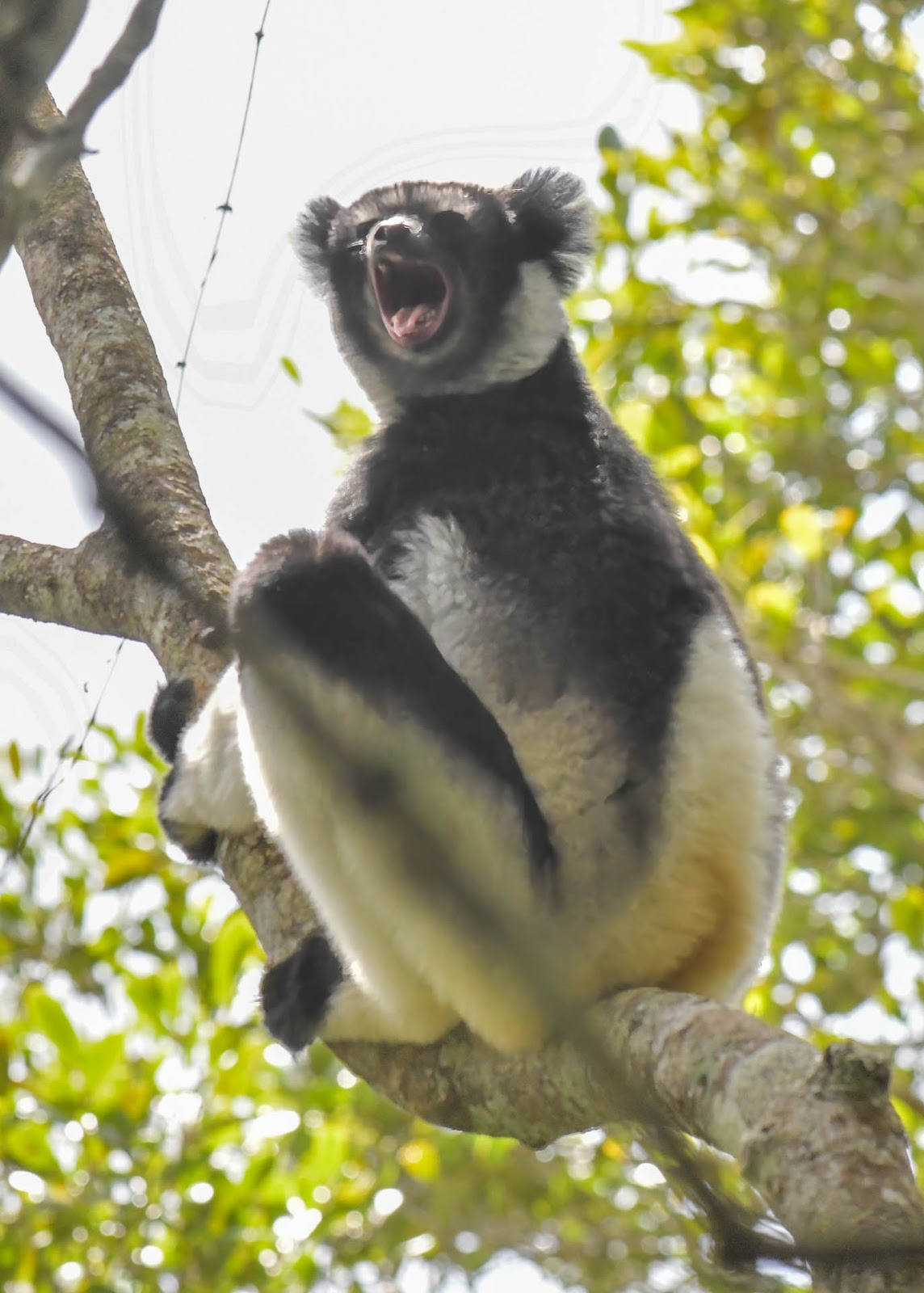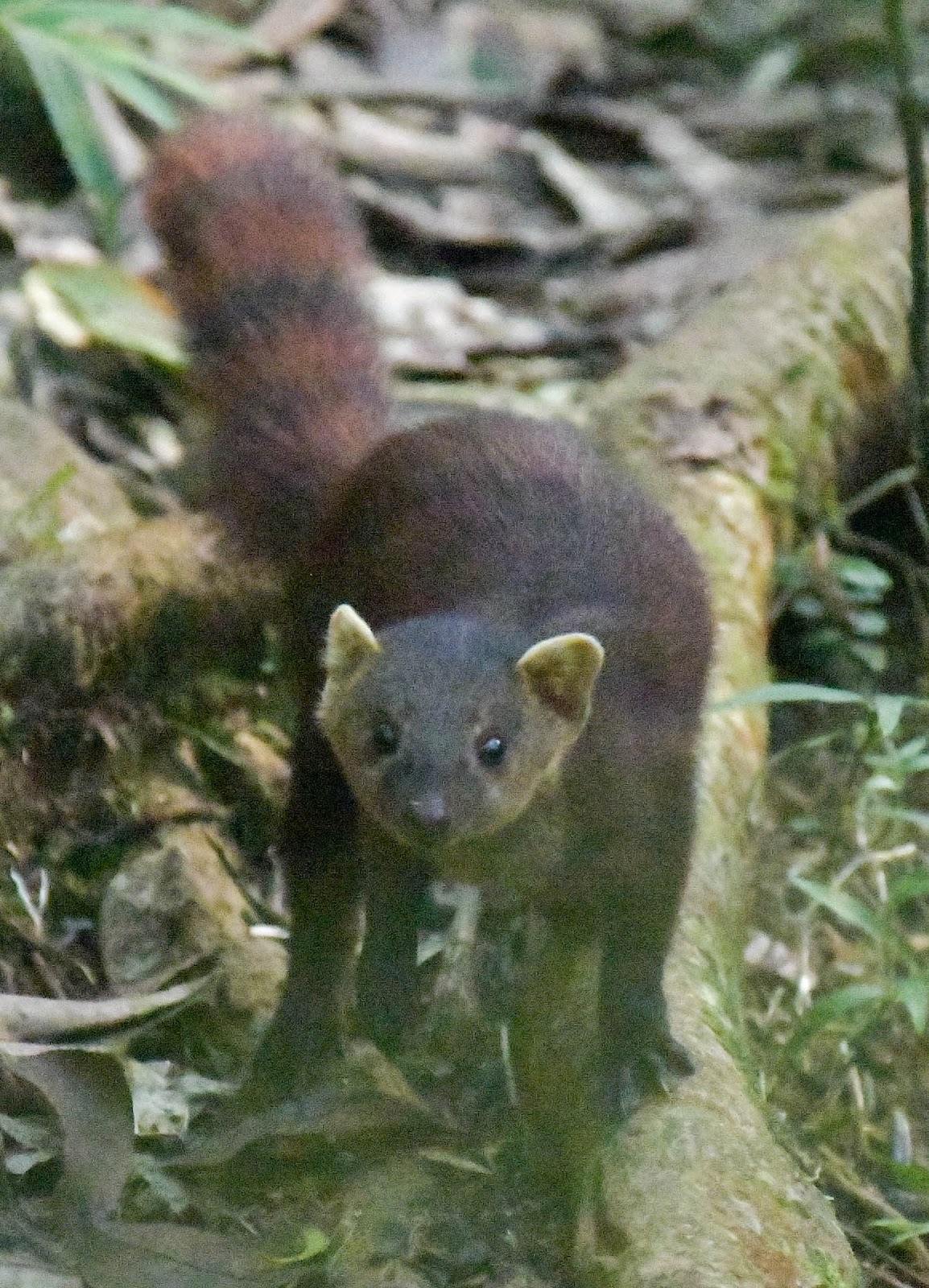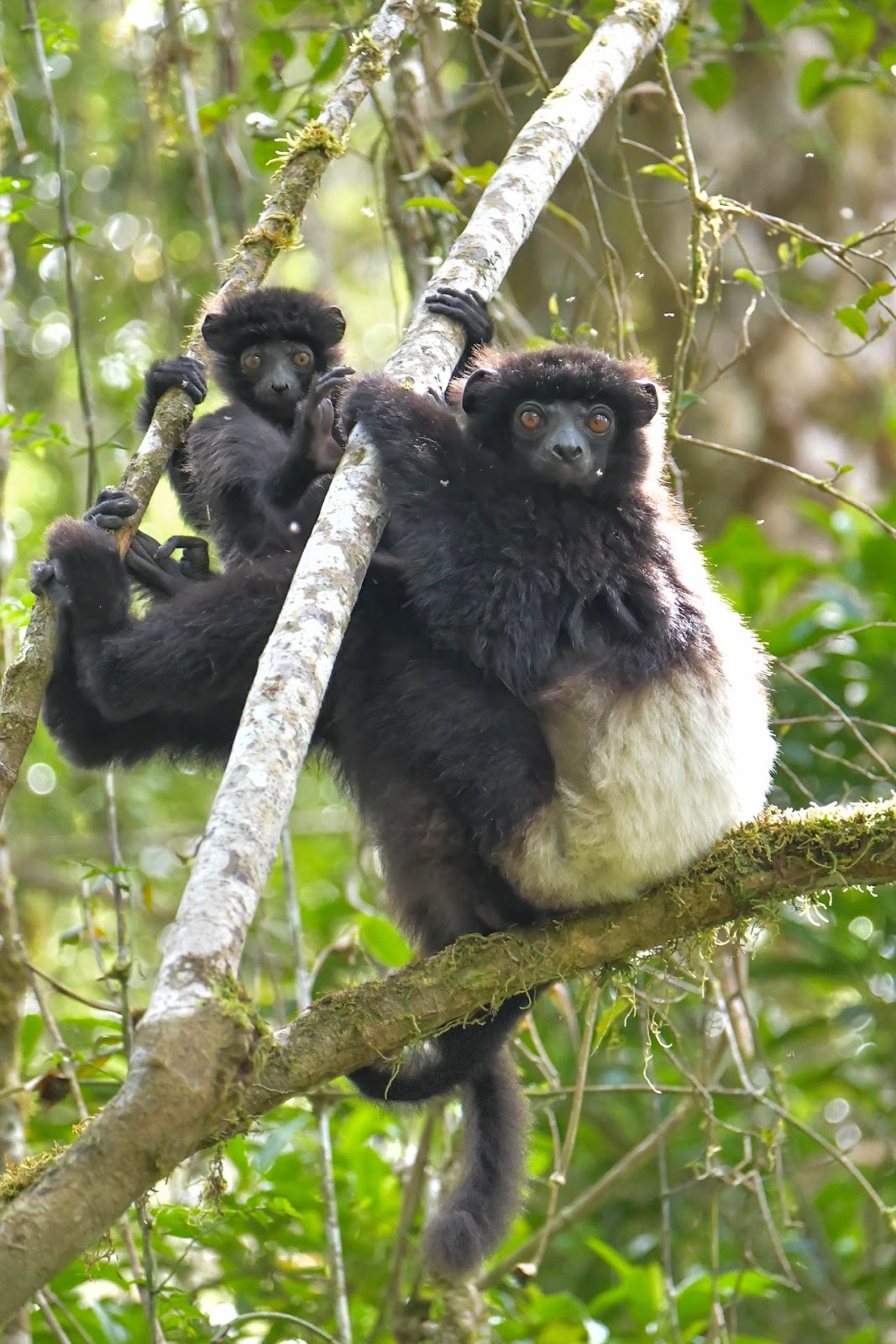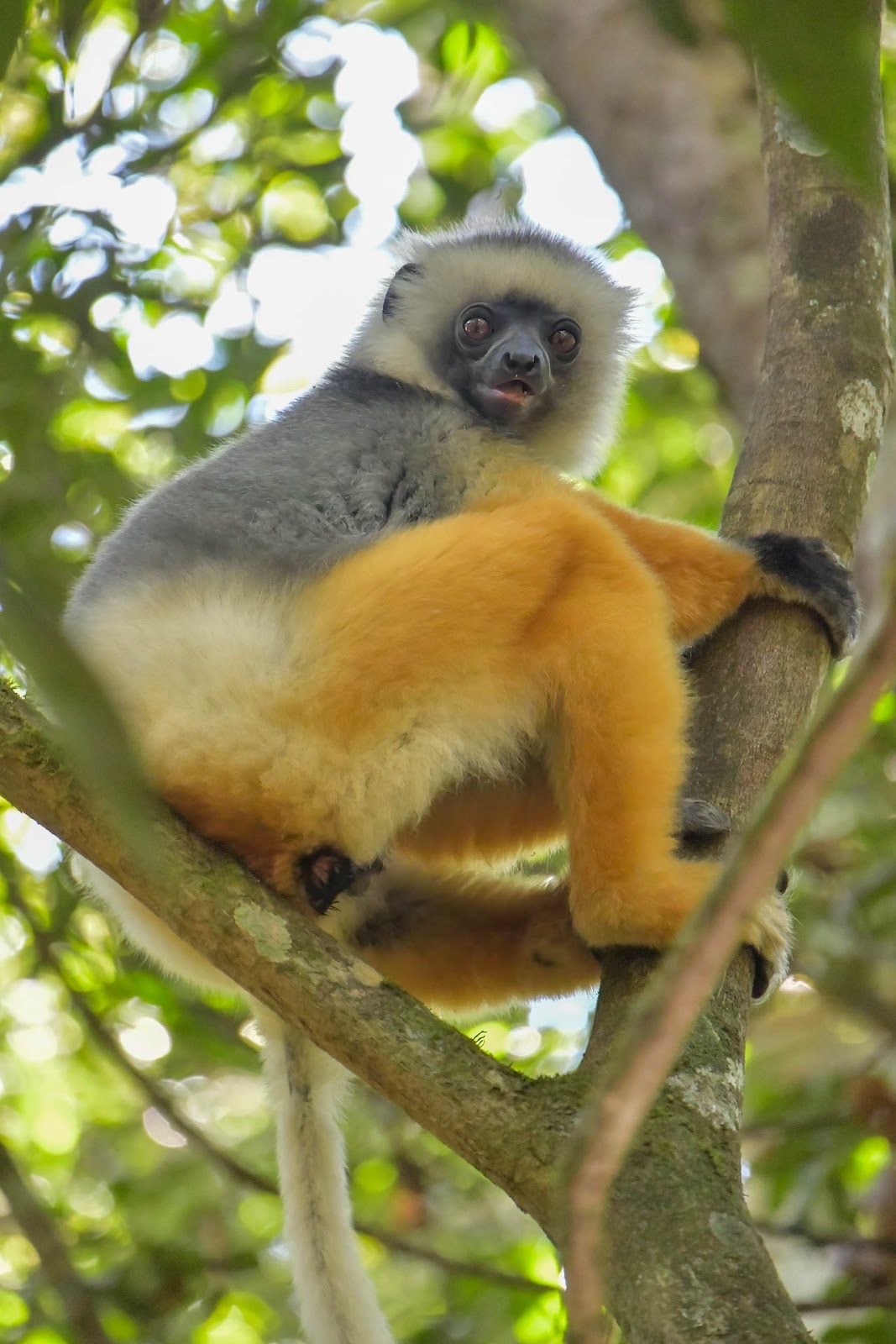We’re in the island nation of Madagascar with our tour leader Patrick Richard searching for lemurs and other exotic wildlife. The second leg of our journey has brought us to the east coast near the town of Antisirabe. We checked into the Vakona Lodge before heading to the nearby VOIMMA Reserve for a night walk. The reserve is run by the community and we were joined by local guide Tina. Patrick spotted our first new lemur species, a Goodman’s Mouse Lemur.
Shortly after, Tina spotted a Lowland Streaked Tenrec! It scurried through the undergrowth then onto the trail where it stopped next to a woman’s shoe giving us all a good view.
Lowland Streaked Tenrecs are endemic to the island of Madagascar and most closely resemble hedgehogs although they are not related. The Lowland Streaked Tenrec has hard quills made of keratin that when rubbed together act as a sounding device (stridulation) for communication or a warning signal to predators. The Streaked Tenrec is the only mammal known to use stridulation, a method more commonly associated with insects and snakes.
Tina spotted eyeshine in a distant tree which upon closer inspection revealed an Eastern Woolly Lemur, another new species!
Early the next morning we drove to Analamazaotra National Park (also known as Andasibe and formerly as Perinet), Madagascar’s most popular park and home to the largest of all lemur species, the teddy-bear-like Indri. We met Tina and she led us onto a narrow path that climbed into the forest away from the large groups of tourists. We didn’t encounter our first lemurs until 2 hours later when Patrick spotted two Common Brown Lemurs.
I really wanted to see an Indri. We could hear them close by but as we approached they stopped calling. Finally, Tina found a family group of Indri and we rushed off to see them. They were low in the trees affording us great views and photos.
They are a handsome animal resembling a cross between a Koala and a Giant Panda. Unlike most other lemurs they don’t have a long tail. Tina told us they live in family groups of 2-5 comprising a monogamous pair with offspring. They have one baby every 2-3 years. She said 72 families or about 200 individuals live in this park and sadly they are critically endangered.
We watched this family before visiting another family nearby. The most endearing quality of the Indri are their wailing songs that resonate through the forest. To hear them call directly overhead was an amazing animal encounter and to experience it without other tourists around made it even more special.
 |
| Indri Vocalizing (audio link below) |
Indri Audio
We returned to the main route and headed off to find the Diademed Sifakas. By the time we arrived they had moved higher into the trees. We waited patiently and eventually the group moved lower into the open and we could now appreciate these beautiful lemurs. One female had a small baby. Diademed Sifakas are critically endangered and along with the Indri, this species is one of the two largest living lemurs.
After lunch we returned to the VOIMMA Reserve to search for the Eastern Lesser Bamboo Lemur. We encountered a very friendly group of Common Brown Lemurs but the bamboo lemurs were eluding us. We were about ready to give up when Tina spotted two quite close giving us good views and photos.
That evening we drove back to the entrance of Andasibe National Park for a walk along the road to search for nocturnal lemurs. We found a new species, the Greater Dwarf Lemur along with more Goodman’s Mouse Lemurs.
The following day was spent in nearby Maromizaha Reserve which still has some large tracts of primary rainforest. We met our new local guide Etienne and scrambled to a bat cave to look for Madagascan Rousette. After nearly loosing my headlamp down a hole, we managed to see and photograph the bats.
Inside the forest, we climbed a ridge where Etienne found 4 Diademed Sifakas. It was good to see these endangered lemurs in another reserve. Etienne told us to wait while he scouted down a ravine. He called up to us that he had found a Black-and-white Ruffed Lemur! We bushwhacked steeply down into the ravine where Etienne was waiting. There was one high up in a tree taking a snooze. He’d look up every so often so Marc was able to get some good photos.
We returned to the trail and climbed to a junction. We took the fork that led steeply down into the valley. Etienne said that at this time of day the lemurs retreat to the cooler valleys. Our next lemur target was the Red-bellied Lemur. We reached some campsites without seeing the lemurs so we stopped to eat our packed lunches. Just then 2 tourists and their guides passed by telling us they had just seen the Red-bellied Lemurs! We rushed off to the location but the lemurs had moved on, bummer. We returned to our lunch spot and lo and behold there was a Red-bellied Lemur in the original location.
 |
| Red-bellied Lemur |
After lunch we continued down the valley to a research center undergoing renovations. Just past the center we spotted 2 mammals scurrying along the trail. They were Ring-tailed Vontsiras! We followed them along the trail getting good views and photos. Patrick and Etienne had found a dead Tufted-tailed Rat on the trail that the Vontsiras had dropped. We waited quietly for them to return for their prey. It didn’t take long for them to come and snatch the rat.
 |
| Ring-tailed Vontsira |
By now it was getting dark in the valley so we climbed back up to the ridge stopping to rest on some benches and to wait for darkness to fall. Other than a few Goodman’s Mouse Lemurs we weren’t finding any other nocturnal mammals. There were plenty of herps along the way including a rare chameleon, the Two-toned Soft-nosed Chameleon rediscovered here in 2018!
 |
| Two-toned Soft-nosed Chameleon |
We left the primary forest and entered the secondary where the hopes of finding our main nocturnal target, the Weasel Sportive Lemur was fading. Etienne tried desperately to lure one in by making kissing noises to no avail. Finally, as we were nearing the end of our walk, Etienne spotted a Weasel Sportive Lemur!
We got back to our vehicle around 8:30, 10 and a half hours after we had set off! We’re now up to 20 species of lemurs and 30 mammal species overall. Not bad considering we’re only half way through our tour.
Our next destination was Ranomafana National Park. We broke up the long 2-day drive by stopping at the town of Antsirabe where we spent a very comfortable night at hotel, Les Chambres du Voyageur. The following morning we were on the road again for the final push to Ranomafana. Finally, after 28 years we were returning to Ranomafana National Park and Patrick’s home turf. We arrived around 3:00 and checked into the Karibotel. Tonight’s walk was along the busy road as night walks aren’t allowed inside the park. Busloads of tourists are driven to a location on the road where Rufous Mouse Lemurs are baited with bananas. To avoid the crowds we started our walk below and slowly headed up. The nocturnal lemurs found here are mouse and dwarf lemurs. The two species of dwarf lemur, Grove’s and Sibree’s are difficult to tell apart even with photos. We were getting glimpses and some photos of the dwarf lemurs but still unable to identify them to species level.
We reached the spot where two tourist buses were parked. Fortunately the mouse lemur show was over and they were headed out. There was still some banana on the tree branches so we had a private viewing of these tiny primates.
Nearby, was an area where Patrick had seen Fanoloka, one of Madagascar’s endemic carnivores. We waited in darkness for the animal to appear. It gave Marc the opportunity to try out our thermal imager. It worked! He saw something moving with the thermal imager and when I turned on my light, a Spotted Fanoloka was on the path! Marc was able to get a good photo before it moved off into the tall grass.
The following morning Patrick felt it was better to visit a less popular part of Ranomafana National Park rather than going to the main section like all the other tourists. I was a bit nervous about missing the Golden Bamboo and Greater Bamboo Lemurs but Patrick assured me we’d see them in the afternoon. We drove to the Vohiparara area of the park where Patrick was surprised to see vehicles in the parking lot. He noticed that one of the cars belonged to Dr. Patricia Wright! We headed into the park hearing many voices. Could it be Pat Wright and her crew! All the noise was from a large trail clearing crew. I was concerned that they would frighten all the lemurs away but Joseph, our local guide knew where there were two roost sites for the Small-toothed Sportive Lemur. The lemurs were sitting outside the tree cavities so we got great views and photos.
There were also some Red-bellied Lemurs in the vicinity and we got better views than we did in Maromizaha Reserve.
We headed off to the section of the park where Joseph had located a family group of Milne-Edwards Sifakas. They were off the main trail so we had to bushwhack in for a better view. A mother with a very active baby was perched in the open and Marc took many photos. The Milne-Edwards Sifakas here were wearing dog collars with different collared tags so the researchers can tell them apart.
 |
| Milne-Edwards Sifakas |
When we returned to the parking lot Dr. Patricia Wright was there with her film crew, yippee! I was hoping to meet her but wasn’t sure she’d be in Madagascar. Dr. Patricia Wright is an American primatologist, anthropologist and conservationist who came to Madagascar in 1986 looking to rediscover the Greater Bamboo Lemur. Not only did she find the Greater Bamboo Lemur, she discovered a new species, the Golden Bamboo Lemur! It turns our that Dr. Wright was filming a documentary with an American TV star, Blake Moyes. I had to admit, I had never heard of Blake because I’m not a regular viewer of the reality TV series "The Bachelor" but I’m glad he’s here raising awareness for the lemurs. What a treat to not only meet one of my conservation heroes, Dr. Patricia Wright but to meet a reality TV star to boot!
After lunch we went to the main section of Ranomafana National Park. As Patrick predicted there were fewer tourists and we had the trails to ourselves. We encountered a group of Golden Bamboo Lemurs near the trail and got great views of this species that Dr. Patricia Wright discovered in 1986.
 |
| Golden Bamboo Lemur |
Further up the trail we encountered a lone Greater Bamboo Lemur feeding along the path. Patrick explained that she is the last Greater Bamboo Lemur in Ranomafana National Park and that an effort to relocate 11 Greater Bamboo Lemurs from another area in March failed. I began to cry, as I watched Simone (as she has been named) the last of her kind in Ranomafana munch on a stalk of bamboo. She would never find a mate and have a family of her own. It was unbelievably sad and I was overcome with grief. Patrick told me not to cry, that she was ok and that a family of Golden Bamboo Lemurs had adopted her. Hopefully, another relocation of more Greater Bamboo Lemurs into the park will be attempted and successful.
The following morning we started the long drive back to Antananarivo. The second leg of our Madagascar journey had come to an end. What an amazing time we’ve had seeing seeing critically endangered lemur species, meeting one of my conservation hero’s, Dr. Patricia Wright and visiting protected areas that provide refuge for Madagascar’s unique wildlife. I can’t wait to see what our third and final leg will bring, stay tuned!
We hope all is well with everyone,
Peggy and Marc
Our route map:




















No comments:
Post a Comment